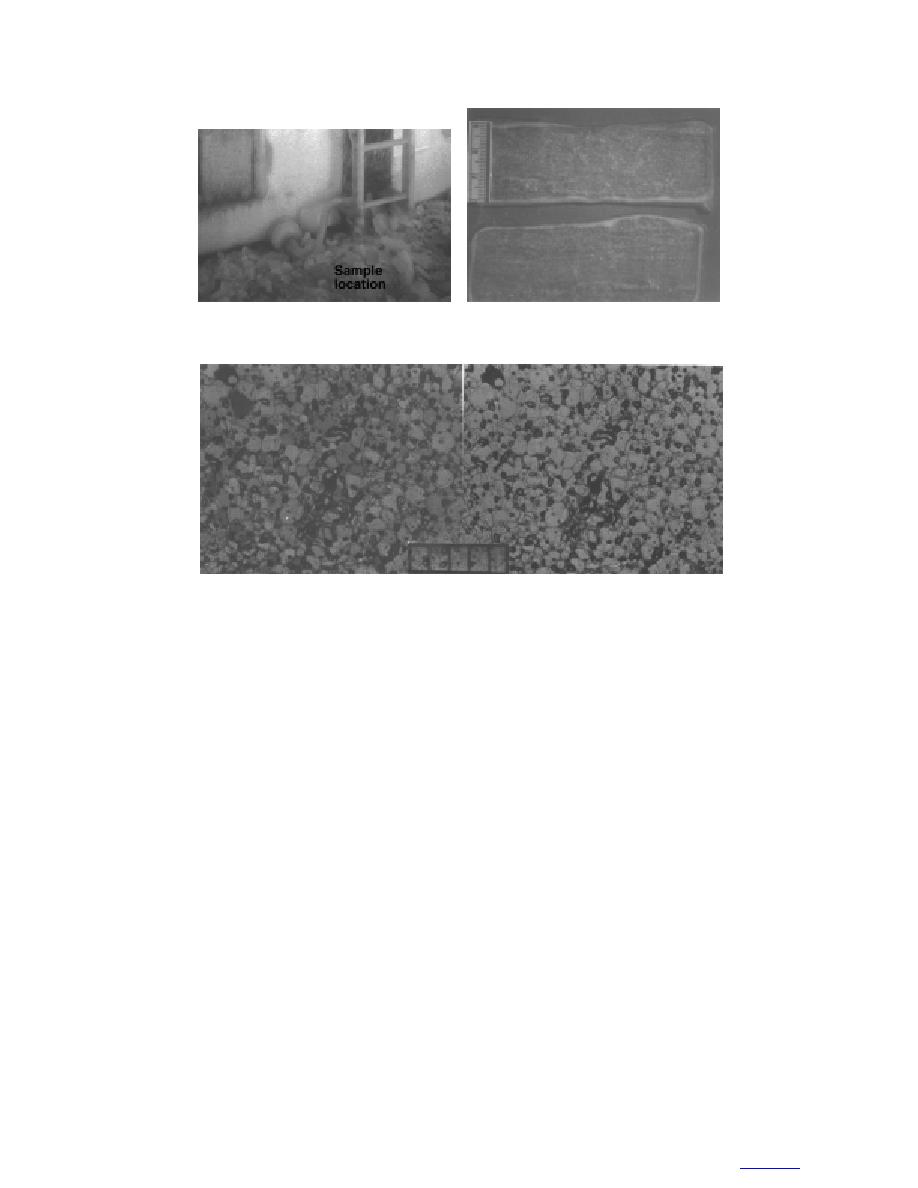
a. Sample location.
b. Thick sections photographed in
natural light.
c. Thin sections photographed in natural light (right) and between crossed
polarizers (left).
Figure 18. Sample F2, taken from the deck, 25 cm forward of the bulkhead
(scales in millimeters). Physical properties are similar to deck sample F1.
stood several centimeters off of the hatch cover and
sured on sample F1 (24.0‰). However, the entrapped
bulkhead surfaces, which allowed cold air to circulate
air volume of 3.3% (Table 2) is appreciably lower ow-
behind them, keeping them colder than the hatch cover
ing to the denser nature of the ice accreted on top of the
or bulkhead. The thick section photo displays wavy lay-
hatch at this site.
ering. Though microstructurally similar to the deck-
accreted ice at sampling site F1 (Fig. 8 and Fig. 17),
March icing event
many of the crystals are seen to possess straight bound-
Vertical surfaces
aries that frequently intersect at approximately 120
Sample M3. This sample was retrieved from the
angles. This near-equilibrium intersection angle for ice
vertical front face of the 5-in. gun housing, below
crystals is compatible with some process of recrystalli-
the barrel (Fig. 20). The thickness of the accreted ice
zation, possibly at elevated temperatures while the ice
was 1.1 cm when sampled. A bulk density of 0.848
Mg m3 was measured, which, in conjunction with a
was still on the hatch. Such a process has been well
documented earlier (Gow 1987). Mean crystal cross-
measured bulk salinity of 14.8‰ and an in-situ ice tem-
perature of 2.2C, gave derived values of brine and
sectional area (0.59 mm2) and the derived mean diam-
eter (0.77 mm) are very similar to values measured on
entrapped gas volumes of 30.1 and 11.3%, respectively.
sample F1. Bubble sizes (averaging 0.25 mm) are also
Microcrystalline characteristics indicate that this sample
very comparable to those found for sample F1. Numer-
also suffered modification of its original grain struc-
ous irregularly shaped inclusions are identified as brine
ture since it was accreted. These modifications include
pockets. Bulk salinity is essentially the same as mea-
substantial straightening of grain boundaries and for-
22
to contents



 Previous Page
Previous Page
